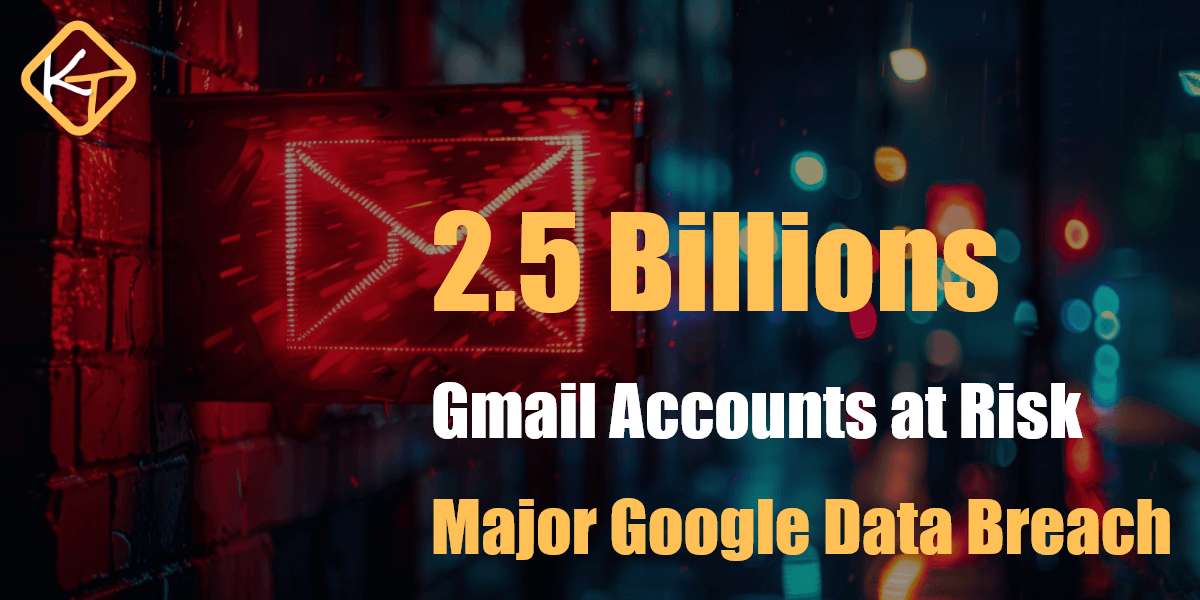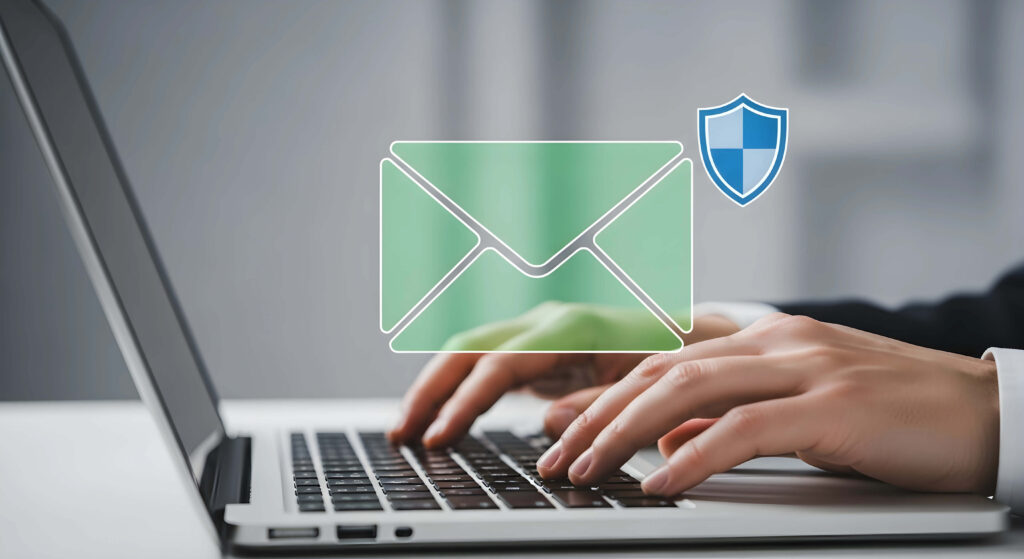
In a shocking revelation that has left the digital world unsettled, reports have surfaced that over 2.5 billion Gmail accounts may have been exposed following a massive Google data breach. The magnitude of this breach is unprecedented — not just because of the sheer number of users affected, but also because of the new wave of scam risks it introduces.
This article dives deep into the event, explores how such a breach changes the landscape of online security, examines potential consequences for both individuals and businesses, and provides actionable steps every Gmail user can take to protect themselves.
A Breach That Shook the Internet ( Google data breach )
When people talk about big data breaches, they usually recall names like Yahoo, Facebook, or Equifax. But the idea that Gmail — the most widely used email service in the world — has been compromised at such scale is truly alarming. With over 2.5 billion active users globally, Gmail isn’t just an email provider; it’s a central hub for online identities.
Think about it: your Gmail account likely links to your banking apps, e-commerce accounts, social media profiles, cloud storage, and even your work correspondence. Losing control of it doesn’t just mean someone could read your emails — it could mean total identity takeover.
This isn’t just another tech headline. It’s a wake-up call that emphasizes how fragile digital trust has become.
The Scale: Why 2.5 Billion Matters
To grasp the gravity of this breach, consider these comparisons:
- 2.5 billion is roughly one-third of the global population.
- It’s almost the combined population of India and China.
- If Gmail were a country, it would be the largest nation on Earth by users.
Now imagine scammers having access to sensitive information from such a massive pool. Even if only a fraction of these accounts were compromised with useful data, we’re talking about hundreds of millions of people at direct risk of phishing, financial fraud, and identity theft.
Unlike past breaches where attackers had to work hard to find valuable targets, this situation delivers them a ready-made catalog of victims.
What Kind of Data Could Be at Risk?
While Google has not disclosed every detail of the exposed information, cybersecurity analysts suggest the following categories could be involved:
- Email addresses and names – Basic, but powerful for targeted phishing.
- Passwords (possibly hashed or leaked elsewhere in combination) – Giving attackers direct account access.
- Phone numbers and recovery emails – Useful for SIM-swapping or multi-account hijacking.
- Email content – Sensitive conversations, receipts, invoices, or confidential data.
- Third-party app tokens – Many users log into apps with “Sign in with Google.” If stolen, this opens doors beyond Gmail.
This means the breach isn’t just about email security. It’s about your entire digital footprint being compromised. Ref
The New Scam Risks Emerging
What makes this breach different is the scale of scam risks now possible. Here are the new dangers every Gmail user should know:

1. Hyper-Targeted Phishing Emails
Scammers now have verified lists of Gmail accounts. Instead of generic spam, they can craft highly personalized messages — complete with your name, location clues, and context. Imagine receiving an email that looks like a follow-up to a real conversation.
2. Fake “Google Support” Attacks
Attackers may pose as Google itself, sending urgent warnings like:
“Your Gmail account is compromised. Click here to secure it.”
Since people are already worried about breaches, the chances of falling for this scam skyrocket.
3. Account Takeovers and Shadow Access
Even if hackers don’t lock you out, they may quietly monitor your emails, intercepting sensitive information like invoices, contracts, or login resets. This “silent spying” is often more dangerous than outright theft.
4. Business Email Compromise (BEC)
For professionals using Gmail for work, attackers could impersonate executives, send fake payment requests, or trick employees into transferring funds. Losses from BEC scams already reach billions annually — this breach only fuels the fire.
5. Multi-Platform Infiltration
Since many apps allow “Login with Google,” one stolen Gmail login can unlock dozens of accounts — from cloud drives to shopping apps — multiplying the damage.
Why This Breach Feels Different
Data breaches aren’t new. But the Google Gmail breach stands out for several reasons:
- Unmatched scale: 2.5 billion is beyond anything we’ve seen before.
- Trust erosion: Google is considered one of the most secure companies in the world. If Gmail can be breached, no one feels safe.
- Wider ecosystem impact: Gmail isn’t just email. It’s tied to Google Drive, Docs, YouTube, and even Android devices. The ripple effect is massive.
This isn’t just about stolen data — it’s about shattering the sense of digital security.
Real-Life Scenarios: How This Affects You
To understand the risks more personally, let’s break down a few scenarios:
- The Freelancer: A graphic designer using Gmail for client communication could have invoices stolen or payments diverted.
- The Student: A college student might have academic records, assignments, or internship applications compromised.
- The Business Owner: A small e-commerce store owner risks losing supplier contacts, order receipts, and customer trust.
- The Everyday User: Someone who uses Gmail for everything could suddenly find their bank and social media accounts hijacked through password resets.
For each of these, the damage isn’t just financial — it’s also emotional and reputational.
How to Protect Yourself Right Now

If you’re a Gmail user, you should treat this breach as if your account details are already in the hands of scammers. Here’s what you can do:
Step 1: Change Your Gmail Password Immediately
Use a strong, unique password that you’ve never used before. Avoid common words or personal details.
Step 2: Enable Two-Factor Authentication (2FA)
Set up Google Authenticator, SMS codes, or a physical security key. This adds a powerful extra layer of protection.
Step 3: Review Account Activity
Check your Gmail settings → “Security” → “Recent activity.” Look for unfamiliar devices or IP addresses.
Step 4: Update Recovery Information
Ensure your phone number and backup email are current. If scammers already changed them, reclaim control fast.
Step 5: Audit Third-Party Apps
Go to “Manage your Google Account” → “Security” → “Third-party apps with account access.” Remove anything suspicious.
Step 6: Stay Alert for Phishing
Don’t click suspicious links, even if the email looks genuine. When in doubt, go directly to Gmail.com instead of clicking.
What Businesses Should Do
For businesses relying on Gmail and Google Workspace, the stakes in the Google Data Breach are even higher. Companies should:
- Conduct mandatory password resets for all employees.
- Enforce organization-wide 2FA.
- Train staff to recognize phishing attempts.
- Monitor for suspicious email forwarding rules (a common hacker trick).
- Consider cybersecurity insurance for financial protection.
The breach isn’t just a consumer problem; it’s a corporate survival issue.
Can Google Regain Trust?
The Google Data Breach raises uncomfortable questions about the company’s ability to safeguard its users. While Google has invested billions in security infrastructure, even the strongest fortress can have a weak spot.
The challenge for Google is not just fixing vulnerabilities — it’s restoring user trust. Transparency, regular updates, and stronger security features will be crucial. Without them, people may begin to question whether they should place all their digital eggs in the Gmail basket.
Looking Ahead: The Future of Data Breaches
Unfortunately, experts agree this isn’t the last breach of this scale. As technology evolves, so do hackers. Here’s what the future may hold:
- AI-driven scams: Attackers using AI to craft perfectly convincing phishing emails.
- Deepfake identity theft: Combining stolen Gmail data with AI-generated voice or video impersonations.
- Breach chaining: Hackers linking multiple breaches together to build complete profiles of victims.
The Gmail breach is a preview of what the next decade of cybersecurity challenges will look like.
Final Thoughts
The exposure of 2.5 billion Gmail accounts is more than a technical failure. It’s a reminder that in the digital age, our identities are only as safe as the systems that protect them.
While the risks of the Google Data Breach are alarming, individuals and businesses aren’t powerless. By taking immediate steps — from stronger passwords to multi-factor authentication — users can reduce their vulnerability.
At the same time, this incident should push companies like Google to raise the bar on security standards, because billions of lives are connected to their platforms.
Staying secure online has never been more important. If you’re looking for a reliable WordPress security website or need expert help with website development, don’t hesitate to contact us
